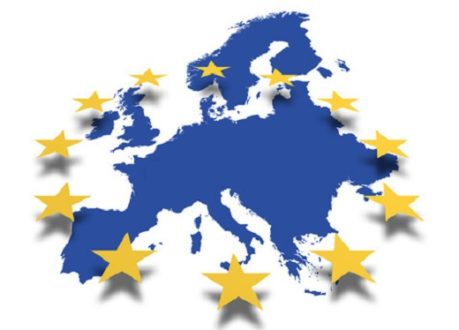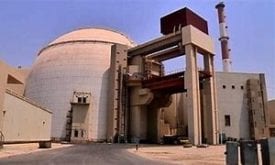Al-Monitor – The reimposition of secondary US sanctions and the consequent hesitation of international banks, European export credit agencies and enterprises to engage Iran have severely undermined the potential for Iran-EU trade. The establishment of the Instrument to Support Trade Exchanges (INSTEX) can be seen as a positive step forward, but it is yet to become operational. In the meantime, opportunities are missed on all sides without a comprehensive strategy among governments and business associations. As such, there is a need for a road map to sustain segments of Iran-EU trade and investment ties that can contribute to the crucial political relations between the two sides.
Per Fischer, the German CEO of INSTEX, traveled to Tehran on March 12 to meet with business and political leaders in order to “clarify the ambiguities” about the payment mechanism. There are still a lot of questions about how INSTEX will work, but it is designed to essentially act as a trustee and administrator of funds related to Iranian exports that would be used for Iranian purchases of goods and services in Europe. Now, all stakeholders are awaiting the operationalization of this entity to assess its impact. At the same time, it is valid to argue that INSTEX has fallen short of Iran’s initial expectations.
Nonetheless, both sides wish to sustain the Joint Comprehensive Plan of Action and also the overall relationship, despite existing tensions and bottlenecks. Indeed, on March 12, EU foreign policy chief Federica Mogherini underlined once more that the EU is still striving to preserve the economic interests of Iran from the pact. However, in the absence of trade, investments and technology transfers to Iran by large European companies, Tehran will not enjoy the expected “economic interests” that Mogherini is referring to. The withdrawal of the French multinational Total from a signed contract and the cancellation of the agreement with Airbus are both symbolic of that reality.
So, step one would be for both sides to accept the new reality in which Iran will at best attract small- and medium-sized enterprises (SMEs) from Europe, mainly those that have no or limited exposure to the US market. As Al-Monitor has argued before, such SMEs could offer Iran the needed technologies; however, SMEs will be overwhelmed by some of the risks and challenges in Iran business. They also need the clarity that when EU officials refer to “legitimate trade,” it means legitimacy according to EU laws and not US laws. In fact, many European companies still perceive that legitimate trade means the food sector and pharmaceuticals, while within EU laws, the scope is much larger.
Therefore, step two would create the needed clarity as well as business climate in which these SMEs can engage Iranian opportunities. An average SME would require legal protection in case of US sanctions, and trade financing and market entry strategies on the Iranian side, including an assessment of various risks and an understanding of the EU sanctions regime on entities such as companies linked to the Islamic Revolutionary Guard Corps. What interested SMEs are facing is the fact that the main European export credit agencies are not financing Iran business, there are too many ambiguities with regard to sanctions and the business climate in Iran and on top of everything else, the majority of European banks don’t even want to hear the word “Iran.” This is why INSTEX and other governmental entities in Europe will have to go beyond being a payment platform and will have to offer legal and risk-management advice to European SMEs to pave the way for greater engagement. This does not mean that INSTEX will have to create a huge bureaucracy, but rather that it will have to develop a list of trusted service providers who can help interested SMEs. Furthermore, INSTEX will have to become an instrument to facilitate the function of export credit agencies, which are the prerequisite of future European exports to Iran.
In addition to technology, the Iranian economy will require investments. Not all the needed capital will have to come from Europe, but the EU can help the country’s development by paving the way for the needed structures to attract longer-term investments in Iranian projects. As such, step three would be a strategy on how to create a mechanism to channel existing capital into funds that can invest in relevant projects. For example, INSTEX could become a platform for creating some Eurobonds for existing or future Iranian projects. Such Eurobonds could include Iranian and international capital, but they need to be protected from any sanctions or confiscation attempts by the US side — a factor that has led to hesitation on the Iranian side to use such mechanisms.
Step four in the process would have to be developed in conjunction with both sides. In order to secure a smooth process of collaboration between European SMEs and the Iranian private sector, one needs to think of all the diverse capabilities within the EU and move away from the established patterns of trade. In other words, Iran has to think of SMEs, but also of smaller European member states that have much to offer and are less scrutinized by US authorities. To achieve that, the Iranian side should draft a comprehensive strategy on the technologies that are required and then clearly identify which SMEs of which EU members are capable of providing the needed technologies. Such a diversified approach would enhance opportunities and also make the emerging trade relations more sustainable in light of potential political shifts in Europe.
Assuming that the above four steps are initiated successfully by both sides, one key issue that would remain is the major imbalance in the trade volume between Iran and the EU in the absence of Iranian oil and petrochemicals exports to Europe. The consequence of the imbalance would be that Iranian exports to the EU wouldn’t generate enough funds to compensate for European exports to Iran. Therefore, step five of the roadmap would be to involve third countries in the process. This step could involve diverse routes: On the one hand, the inclusion of a third country such as India could generate some needed inflow into INSTEX, if, for example, segments of Iran’s petroleum sector exports to India flow into the European payment mechanism. On the other hand, the involvement of a country such as Iraq could pave the way for using some of the Iranian trade surplus with Iraq to offset the payment imbalances. Interestingly, Abdolnasser Hemmati, governor of Iran’s central bank, seemed to hint at such a plan when he recently discussed the country’s new trade policy. The impact of the process would be that many imports into Iran would go through Iraq and then be re-exported to Iran.
Step six in the process would be to create more space for new areas of cooperation. Iran has a very diverse economy and there are important developments that could connect well to European markets. For example, health tourism or opportunities emerging from Iranian information technology start-ups are good examples where a closer cooperation between the two sides could consolidate relations and generate interests that could compensate for the lack of initially expected benefits.
All of the above steps are feasible, but they would require greater proactivity and creativity on both sides. They would also be concrete steps toward a potential future trade and cooperation agreement that could act as another component in a process of deepening Iran-EU relations. In fact, negotiations for a nonpreferential trade and cooperation agreement took place between 2002 and 2005 but then were put on hold due to the nuclear standoff. Perhaps it is time to reconsider that path, taking into account new political and economic realities.Found in:SANCTIONS, IRAN DEAL, ECONOMY AND TRADE, EU-MIDEAST TIES
Bijan Khajehpour is an economist and a managing partner at Eurasian Nexus Partners, a Vienna-based international strategic consulting firm.
 Shabtabnews In this dark night, I have lost my way – Arise from a corner, oh you the star of guidance.
Shabtabnews In this dark night, I have lost my way – Arise from a corner, oh you the star of guidance.



